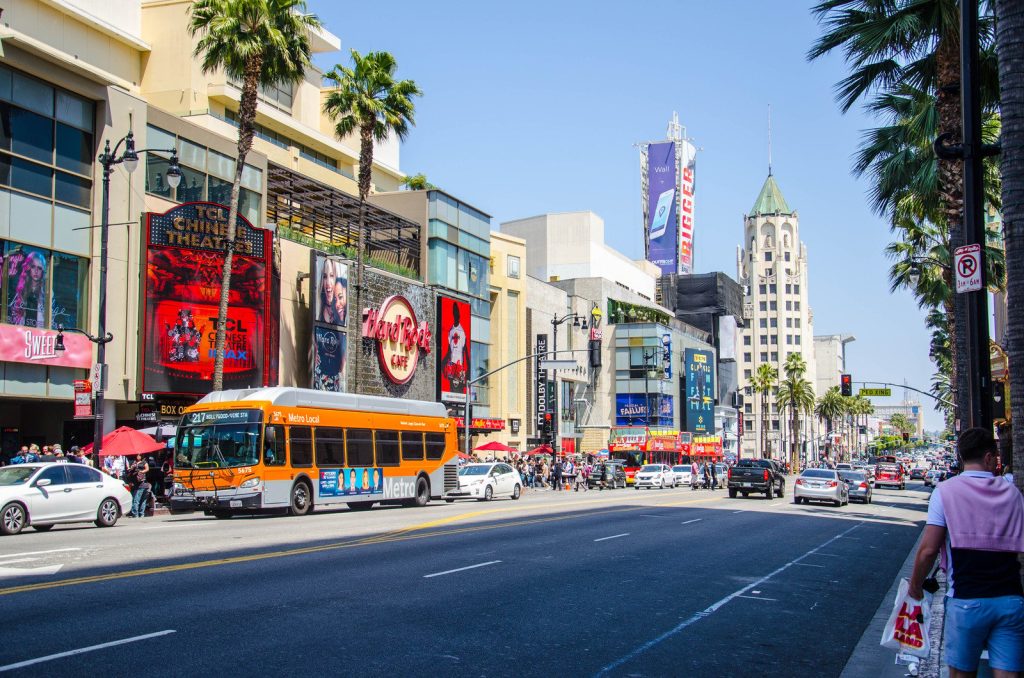
There’s always a hot ticket at fashion week – emerging names who go on (or not) to make the waves predicted for them. In September, it was non-binary designer Harris Reed, among the winners of the Leaders of Change category at the 2021 British Fashion Awards, who presented their second-only collection at London’s Serpentine Gallery Pavilion. Ten pieces were repurposed from second-hand bridal and groomwear, and seamlessly blended the motifs of classic male-and-female formal attire, to create a bolero from tuxedo jackets, a floor-sweeping lace cape from veils, and more. Extravagant yet soulful, the show had all the hallmarks of the imagination that has seen the Central St Martins graduate put Harry Styles in a ballgown for US Vogue, and dress supermodel and entrepreneur Iman for the Met Gala 2021.
More like this:
– How BLM changed fashion
– What does the perfect man look like?
– The gender-fluid look that fans love
Reed’s work is a further incarnation of fashion’s exploration of non-binary identity. In interview after interview, Reed makes clear that their work is a celebration of the “romanticism of the non-binary”. As the designer told Vogue, “I don’t just make clothes. I fight for the beauty of fluidity. I fight for a more opulent and accepting world”.
For Caroline Stevenson, head of cultural and historical studies at the London College of Fashion, Reed succeeds: “Harris Reed’s aesthetic speaks to the limiting boundaries of society’s binary gender roles,” she tells BBC Culture. “They use fashion as a stage to demonstrate the abundance of imagination, choice and freedom available to us when these boundaries are lifted. The non-binary experience is one of self-determination, rather than fitting into society’s expectations of what a male or female should be.”
Arguably, there has never been a better time to explore gender identity: from those who identify as neither male nor female, to those who identify as both – and all those in between. More and more high-profile personalities are publicly rejecting the stereotypes that come along with being assigned male or female at birth – from designers Reed, Charles Jeffrey of Loverboy and Edward Crutchley to hip labels such as Art School and One DNA, from models Lily Cole, Ruby Rose and Cara Delevingne to actors Elliot Page and Kristen Stewart. In 2019, Pose star Indya Moore became the first non-binary person to be the face of a Louis Vuitton campaign, while Laverne Cox, who plays trans prisoner Sophia Burset in Netflix drama Orange is the New Black, became the first trans person to be on the cover of British Vogue.
If society is no longer organised around a gender binary, we no longer need these distinctive categories – Caroline Stevenson
Lea T has modelled for Givenchy, Andreja Pejić has walked runways for both menswear and womenswear, Gucci worked with Hari Nef. Meanwhile, an upcoming exhibition at London’s V&A, Fashioning Masculinities: The Art of Menswear, looks set to further challenge stereotypes, celebrating the foundations of men’s fashion by displaying more than 100 looks, including Billy Porter’s hot pink Golden Globe cloak and work by Harris Reed, alongside 100 sculptures and artworks including the celebrated marble statue of Classical Antiquity, the Apollo Belvedere. When Collins has included “non-binary” in its dictionaries, and when publications like Business Insider offer headlines like “Trans and non-binary representation is going mainstream in advertising”, you know something fundamental has shifted.
Gender-neutral clothing has a long history. Across the world and the millennia, items such as tunics and togas, kimonos and sarongs, have been worn by both sexes. Momo Amjad of The Future Laboratory – a strategic foresight consultancy based in London – cites several examples of third-gender communities with a long past. Among them are the traditional Māhū people in Native Hawaiian and Tahitian cultures, the pan-gender roles of nádleehi people in the Navajo Nation, and the eunuchs, intersex people, asexual or transgender people known as the Hijra across South Asia.
“Clothing was not always split along gender lines,” explains Stevenson. “In feudal England, fashion followed class status and land tenure. Male and female dress across class stratifications was very similar. It was only through the breakdown of feudal society into a market society – where men started to dominate the workforce – that clothing shifted into male and female categories. Male fashion revolved around shifting notions of the suit, while female dress remained aspirational and flamboyant; a marker of her husband’s success.” And it is largely since the early 20th Century, and the rebirth of the debate around gender equality and female inclusion in the world of work, that Western fashion has been marked by, as Stevenson puts it, “overt and repressed desires to emulate the clothing styles associated with the opposite gender”.
Now it is normal to see women in suits and, increasingly, pussy-bow blouses for men, for instance at Yves Saint Laurent and Gucci. But the recent attention to non-binary style is more than stylistic experimentation, news that will be balm to the more than one in 10 millennials who now identify as transgender or gender non-conforming. “The new wave of non-binary is intimately bound up with significant shifts in society’s expectations around gender roles, and our understanding of gender equalities,” says Stevenson. “If society is no longer organised around a gender binary, we no longer need these distinctive categories.” In this brave new world, the role of fashion cannot be understated. “When a platform such as fashion invites ‘The Other’ to be presented, it opens doors,” says Sissel Kärneskog, a non-binary “humanwear” artist.
“The LGBTQIA+ community have always been experts in expressing themselves with fashion but, until now, it has mostly occurred behind the scenes,” Kärneskog tells BBC Culture. “So, every time the border of the binary gets crossed within a ‘normalised’ context, it is beneficial for those who might feel intimidated to express themselves, and for the rest to get a greater understanding.”
Why now? Representation in the media and increased civil rights are fundamental to the further “queering” of new generations, according to Amjad. And there are other key drivers, “ranging from accelerating technologies and virtual communities to the active dismantling of structural biases,” says Amjad. “It’s significantly safer – at least in the Western world – to come out as non-binary.”
‘Feeling the fantasy’
Meanwhile, social media is reflecting this shift. With six million views on the #nonbinaryfashion tag and more than 10 million views on the #unisexfashion tag on community-led platform TikTok, influencers such as Kate Sabatine (@k8sabz) and artist Darkwah Kyei-Darkwah (@hausofdarkwah) offer queer-focused fashion advice and affirmation, as well as fashion and beauty looks and clips of them making their own outfits. Social media “opens up the politics of fashion to everyone”, says Amjad.
Fashion is fascinated with non-binary identity precisely because it can’t be fitted neatly into boxes and definitions – Willow Defebaugh
Non-binary appeals to fashion’s eternal preoccupation with the emotional, the exceptional and the unique. “Fashion is fascinated with non-binary identity precisely because it can’t be fitted neatly into boxes and definitions,” says Willow Defebaugh, co-founder of Atmos, a biannual magazine exploring climate and culture. “It shows the mainstream what’s possible.” This fascination offers rich seams to mine of myth-making and storytelling. If Reed’s vision is the up-ending of gendered formalwear, for compatriot Charles Jeffrey’s spring/summer 2022 collection, it is the play of the paganism and 17th-Century-inspired doublets, presented on a mix of queer, trans and non-binary characters.









